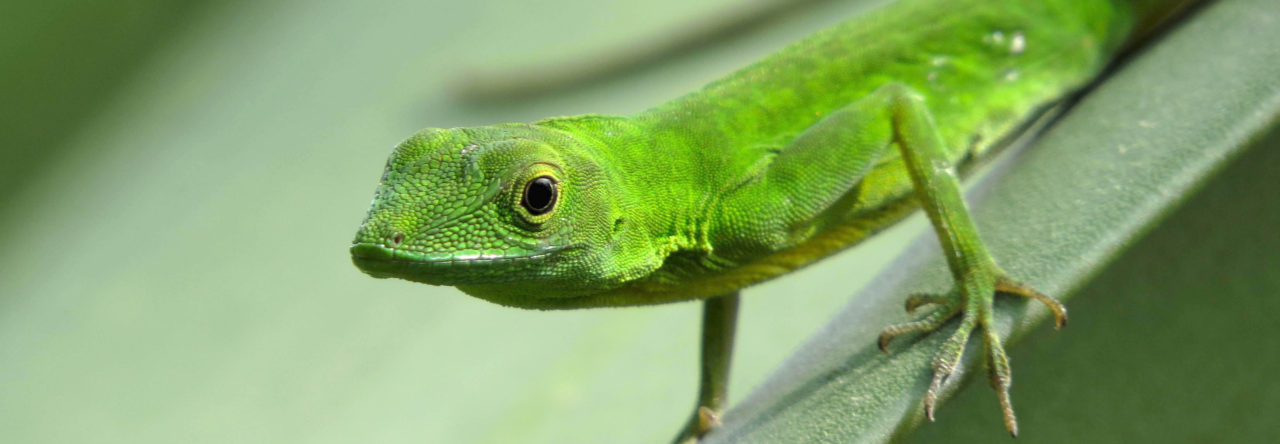Traditionally, ecologists have studied food web interactions within particular habitats with the idea that what happens in Vegas stays in Vegas. The idea is that habitats are discrete entities and most ecological interactions occur among species within that habitat, rather than across habitats. In recent years, however, that view has been challenged by the recognition that organisms and resources can cross habitat boundaries. For example, when bears catch migrating salmon, the fish carcasses wash ashore, and the nutrients released from their decay—as well as from the bears pooping in the woods—can link the productivity of the oceans to the terrestrial realm. Increasingly, such cross-habitat/ecosystem interactions are being seen as having major effects on food web functioning.
In a pair of recent papers, the UC-Davis anole team reports elegant field studies on the role that the brown anole, A. sagrei, plays in mediating these effects.










